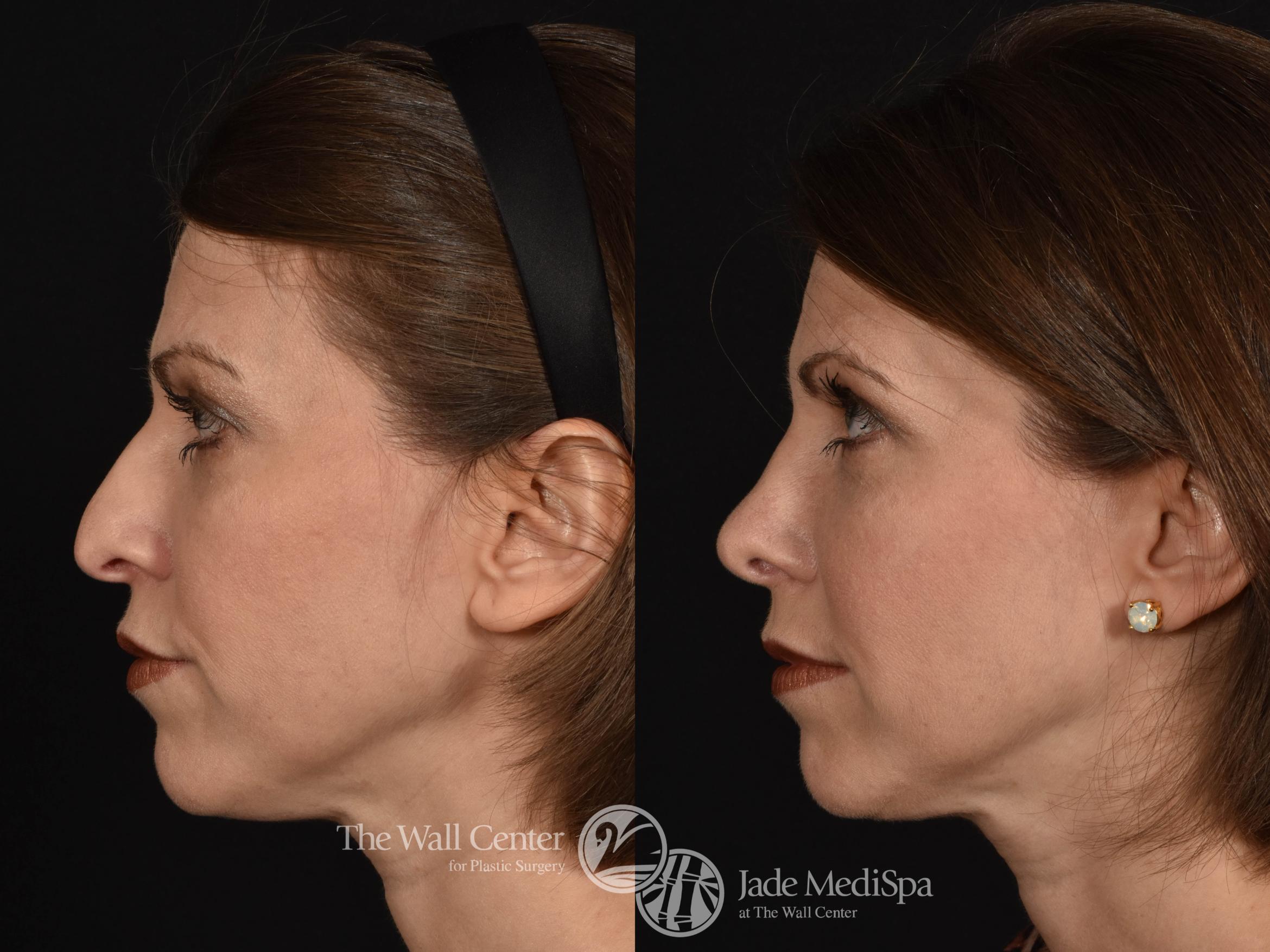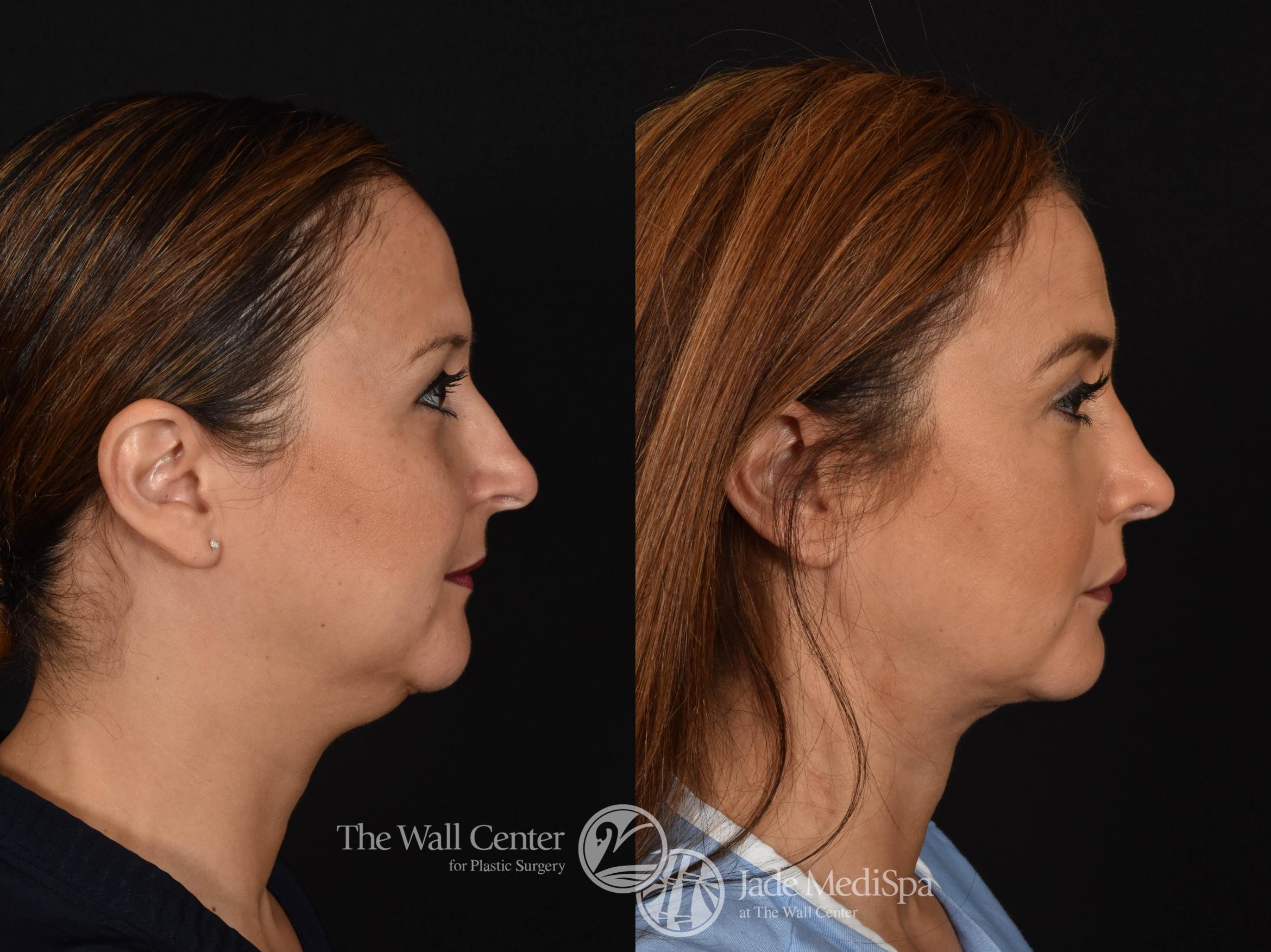Most rhinoplasty patients are concerned about potential nose job swelling and its progression. While swelling is a natural part of the healing process, it can be unpredictable. Some days, your nose may look more swollen than others, but it’s helpful to understand what’s considered “normal” and what to watch for.
To help set clear expectations, we’ve broken down what you can typically expect week by week as your nose settles into its final shape.
Days 1 to 3: The Peak of Swelling
Swelling is often at its most intense 2 to 3 days after surgery. You’ll likely notice puffiness around the nose, cheeks, and even under the eyes. Bruising is common, and your nose may appear larger than expected due to post-surgical fluid buildup. Don’t be alarmed—this is to be expected.
To minimize discomfort and reduce post-nose job swelling:
- Keep your head elevated, even while sleeping.
- Apply cold compresses around (not directly on) the nose.
- Avoid strenuous activity and follow your surgeon’s aftercare instructions.
Closely adhering to your postoperative instructions enhances comfort and healing during this critical recovery stage.
Week 1: Initial Swelling Starts To Subside
Your initial swelling begins to subside by the end of the first week. However, asymmetry is common at this stage—one side may appear more swollen than the other. Toward the end of the one-week mark, your post-surgical brace is removed (the “big reveal”), and most patients feel comfortable returning to work or school.
Weeks 2 to 3: The ‘Settling In’ Phase
Swelling improves substantially 2 weeks after your nose job, and your nose starts to look more refined. However, tip swelling often lingers longer than swelling along the bridge—this is especially noticeable for patients with thicker skin.
To aid healing:
- Drink plenty of water and reduce salt intake to prevent fluid retention.
- Continue sleeping with your head elevated.
- Avoid glasses that rest on your nose, as they can affect healing.
You can usually resume wearing glasses at around 6 weeks post-op, as swelling resolves significantly.
Weeks 4 to 8: You’ll Start Looking More Like Yourself
By the two-month mark, the most noticeable swelling subsides, and you’ll start seeing a more defined nasal structure. However, subtle swelling—especially in the nasal tip—can persist.
At this time, you can typically resume your regular workouts despite residual swelling.
Months 3 to 6: Subtle Refinements
Good news—you’ve reached the point during healing where your nose appears much more natural. Any lingering swelling should be mild. However, swelling can fluctuate with a variety of factors, from the amount and quality of your sleep to how well you stay hydrated. Even the weather can affect post-rhinoplasty swelling.
Patients undergoing revision rhinoplasty may experience prolonged swelling. Remember, patience is key, and your ideal nose is well worth the wait.
Months 6 to 12: The Final Stretch To Achieving Your Ideal Nose
It can take up to a year for residual swelling to completely dissipate, but at this point, you can confidently show off your perfect profile!
What If Swelling Seems Unusual?
While swelling is expected, some signs may warrant a follow-up:
- Significant asymmetry that doesn’t improve over time.
- Sudden swelling months after surgery.
- Unusual pain, redness, or warmth, which could indicate an infection.
If you have any concerns, reach out to our knowledgeable team for reassurance and guidance. We’re here to support you during each stage of rhinoplasty healing.
Begin Your Rhinoplasty Journey
Understanding rhinoplasty swelling and its progress is key to a smooth, stress-free recovery. Every patient heals at their own pace, but you’ll see beautiful, lasting results with patience and proper aftercare. Explore our answers to common rhinoplasty questions in our related blog post and request a consultation today using our online form or calling us at (318) 795-0801.






Leave a Reply